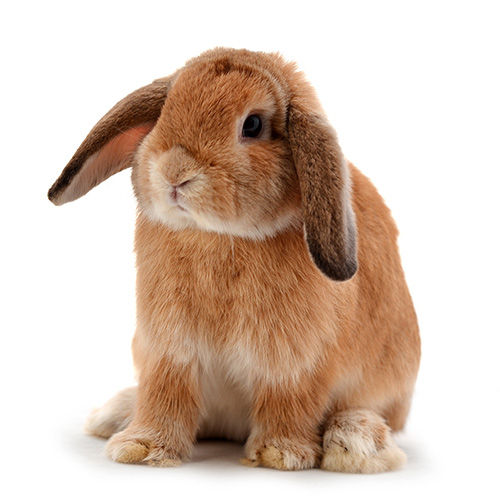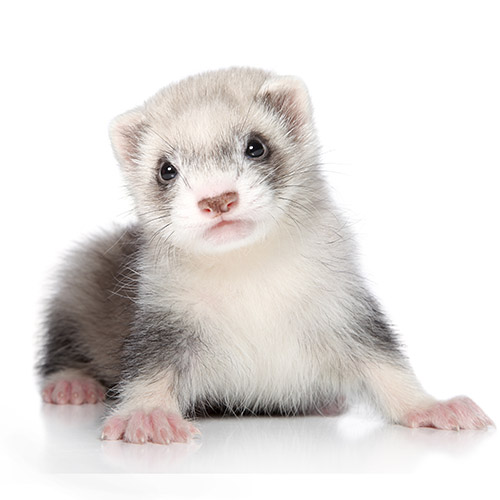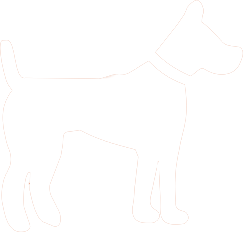Small Animals
Small Animals are only available at Petland Chicago Ridge.
Petland carries all of your favorite small animals! From bunnies, guinea pigs, ferrets, and all different types of hamsters – we have all your small cuddly animal needs covered! All of our pets are in an open petter style environment so you can come down and socialize anytime you would like. We look forward to seeing you soon!
That’s right, folks! We don’t just have puppies and kittens! Petland is known for being full-service and focusing on all types of different animals, because everyone’s preference is different! Small animals can be an easier starter pet for a young child or a great low-maintenance pet for a teacher and their classroom! We welcome all types of pet parents in our store, because it’s clear that we all love animals, no matter what size or shape they come in! Our small animals come from caring breeders that are focused on raising the bar when it comes to animal care and husbandry.
Our small animals are also well-socialized while being in our store. Unlike other pet stores, our animals are accessible as long as they are handled with care and not behind glass enclosures where you can’t pick one out based on personality. We encourage socialization because it make are small animals better companions and our customers more informed pet parents before they take one of our little guys home!
We also carry an array of small animal supplies so you can properly take care of your small animal. We have top-of-the-line cages and habitats for them to live in that are fun to look at and easy to clean. We also carry all the latest and greatest toys, treats and high-quality foods for all of our small animals so you can strengthen the bond between animal lover and pet. In short, we want to match the right pet with the right owner and meet the needs of both, that’s the Petland motto!
Guinea pigs
The guinea pig (Cavia porcellus), also known as the cavy or domestic guinea pig, or cuy for livestock breeds, is a species of rodent belonging to the family Caviidae and the genus Cavia. Despite their common name, these animals are not in the pig family Suidae, nor do they come from Guinea. They originated in the Andes, and earlier studies based on biochemistry and hybridization suggest they are domesticated descendants of a closely related species of cavy such as Cavia aperea, C. fulgida, or C. tschudii and, therefore, do not exist naturally in the wild. Recent studies applying molecular markers, in addition to studying the skull and skeletal morphology of current and mummified animals, revealed that the ancestor is most likely Cavia tschudii.
The domestic guinea pig plays an important role in the folk culture of many Indigenous South American groups, especially as a food source, but also in folk medicine and in community religious ceremonies. Since the 1960s, efforts have been made to increase consumption of the animal outside South America.
In Western societies, the domestic guinea pig has enjoyed widespread popularity as a household pet since its introduction by European traders in the 16th century. Their docile nature; friendly, even affectionate responsiveness to handling and feeding; and the relative ease of caring for them, continue to make guinea pigs a popular pet. Organizations devoted to competitive breeding of guinea pigs have been formed worldwide, and many specialized breeds of guinea pig, with varying coat colors and compositions, are cultivated by breeders.
Biological experimentation on guinea pigs has been carried out since the 17th century. The animals were frequently used as model organisms in the 19th and 20th centuries, resulting in the epithet “guinea pig” for a test subject, but have since been largely replaced by other rodents such as mice and rats. They are still used in research, primarily as models for human medical conditions such as juvenile diabetes, tuberculosis, scurvy, and pregnancy complications.

Hamsters & Roborovski Hamsters
The best-known species of hamster is the golden or Syrian hamster (Mesocricetus auratus), which is the type most commonly kept as pets. It is also sometimes called a “fancy” hamster. The pet trade and fanciers have given names to several color variations, including “honey bear”, “panda bear”, “black bear”, “European black bear”, “polar bear”, “teddy bear”, and “Dalmatian”. Several variations, including long-haired varieties, grow hair several centimeters long and often require special care. British zoologist Leonard Goodwin claimed most hamsters kept in the United Kingdom were descended from the colony he introduced for medical research purposes during the Second World War.
Other hamsters kept as pets are the various species of “dwarf hamster”. Campbell’s dwarf hamster (Phodopus campbelli) is the most common—they are also sometimes called “Russian dwarfs”; however, many hamsters are from Russia, so this ambiguous name does not distinguish them from other species appropriately. The coat of the Djungarian or winter-white Russian dwarf hamster (Phodopus sungorus) turns almost white during winter (when the hours of daylight decrease). The Roborovski hamster (Phodopus roborovskii) is extremely small and fast, making it difficult to keep as a pet. The Chinese hamster (Cricetulus griseus), although not technically a true “dwarf hamster”, is the only hamster with a prehensile tail (about 4 cm long) most hamsters have very short, nonprehensile tails.
Many breeders also show their hamsters, so breed towards producing a good, healthy, show hamster with a view to keeping one or two themselves, so quality and temperament are of vital importance when planning the breeding.

Bunnies
Rabbits are small mammals in the family Leporidae of the order Lagomorpha, found in several parts of the world. There are eight different genera in the family classified as rabbits, including the European rabbit (Oryctolagus cuniculus), cottontail rabbits (genus Sylvilagus; 13 species), and the Amami rabbit (Pentalagus furnessi, an endangered species on Amami Ōshima, Japan). There are many other species of rabbit, and these, along with pikas and hares, make up the order Lagomorpha. The male is called a buck and the female is a doe; a young rabbit is a kitten or kit.
Rabbit habitats include meadows, woods, forests, grasslands, deserts and wetlands. Rabbits live in groups, and the best known species, the European rabbit, lives in underground burrows, or rabbit holes. A group of burrows is called a warren.
More than half the world’s rabbit population resides in North America. They are also native to southwestern Europe, Southeast Asia, Sumatra, some islands of Japan, and in parts of Africa and South America. They are not naturally found in most of Eurasia, where a number of species of hares are present. Rabbits first entered South America relatively recently, as part of the Great American Interchange. Much of the continent has just one species of rabbit, the tapeti, while most of South America’s southern cone is without rabbits.
The European rabbit has been introduced to many places around the world.

Ferrets
The ferret (Mustela putorius furo) is the domesticated form of the European polecat, a mammal belonging to the same genus as the weasel, Mustela of the family Mustelidae. They typically have brown, black, white, or mixed fur. They have an average length of 51 cm (20 in) including a 13 cm (5.1 in) tail, weigh about 1.5–4 pounds (0.7–2 kg), and have a natural lifespan of 7 to 10 years. Ferrets are sexually dimorphic predators with males being substantially larger than females.
Several other Mustelids also have the word ferret in their common names, including an endangered species, the black-footed ferret.
The history of the ferret’s domestication is uncertain, like that of most other domestic animals, but it is likely that ferrets have been domesticated for at least 2,500 years. They are still used for hunting rabbits in some parts of the world, but increasingly, they are kept only as pets.
Being so closely related to polecats, ferrets easily hybridize with them, and this has occasionally resulted in feral colonies of polecat-ferret hybrids that have caused damage to native fauna, especially in New Zealand. As a result, some parts of the world have imposed restrictions on the keeping of ferrets.


 Available Puppies
Available Puppies Adopted Puppies
Adopted Puppies Video Gallery
Video Gallery Puppy Breeds
Puppy Breeds
